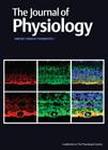版权所有:内蒙古大学图书馆 技术提供:维普资讯• 智图
内蒙古自治区呼和浩特市赛罕区大学西街235号 邮编: 010021

作者机构:Univ Liverpool Physiol Lab Dept Physiol Liverpool L69 3BX Merseyside England Univ Liverpool Dept Vet Preclin Sci Liverpool L69 3BX Merseyside England
出 版 物:《JOURNAL OF PHYSIOLOGY-LONDON》 (生理学杂志)
年 卷 期:1999年第520卷第1期
页 面:153-163页
核心收录:
学科分类:0710[理学-生物学] 1001[医学-基础医学(可授医学、理学学位)] 07[理学] 071003[理学-生理学]
基 金:Wellcome Trust Funding Source: Medline
主 题:钙/代谢 钙/生理学 钙信号/药物作用 钙信号/生理学 钙转运ATP酶类/生理学 卡巴胆碱/药理学 碳酰氰化物间-氯苯基腙/药理学 动力学 线粒体 肌/药物作用 线粒体 肌/代谢 线粒体 肌/生理学 肌 平滑/细胞学 肌 平滑/生理学 肌 平滑/超微结构 拟副交感神经药/药理学 肌浆网/药物作用 肌浆网/酶学 肌浆网/生理学 钠/生理学 解偶联药/药理学 子宫/细胞学 子宫/生理学 子宫/超微结构 动物 女(雌)性 大鼠
摘 要:1. The mechanisms responsible for removing calcium ions from the cytoplasm were investigated in single rat uterine myocytes using indo-1. 2. Trains of depolarizing voltage-clamp pulses increased [Ca2+](i). The rate of decay of [Ca2+](i). was slowed by inhibition of the sarcoplasmic reticulum (SR) Ca2+-ATPase with cyclopiazonic acid (CPA). However, if the sarcolemmal Na+-Ca2+ exchanger and Ca2+-ATPase were inhibited then recovery of [Ca2+](i) was abolished showing that the SR Ca2+-ATPase alone cannot produce decay of [Ca2+](i). 3. In another series of experiments, Ca2+ release from the SR was induced with carbachol in a Ca2+-free solution. Under these conditions responses to repeated applications of carbachol could be obtained. In the presence of CPA, however, only the first application was effective. This suggests that the SR Ca2+-ATPase sequesters a significant amount of Ca2+ into the SR. 4. CPA slowed the rate of decay of [Ca2+](i) following carbachol addition by 50%. Again, however, after a brief transient fall, decay was abolished when the Na+-Ca2+ exchanger and sarcolemmal Ca2+-ATPase were inhibited. 5. These data show that, although the SR Ca2+-ATPase contributes to the decay of [Ca2+](i), it cannot function effectively in the absence of Ca2+ removal from the cell. These data are discussed in the context of the superficial buffer barrier model in which Ca2+ is taken up into the SR and then released very close to sarcolemmal Ca2+ extrusion sites, i.e. the SR acting in series with the surface membrane extrusion mechanisms. We also suggest that the amount of filing of the SR influences the rate of Ca2+ removal.